TIINA RAEVAARA: where science and surrealism meet
Tiina Raevaara is a novelist and a PhD in genetics and such an unusual combination alone is sufficient to raise interest in her persona and work. Even more compelling is the fact that she started to write only eight years ago and her second opus – a short stories collection – “En tunne sinua vierelläni” (I don’t feel you beside me) has already been crowned with the Runeberg prize – one of the most prestigious Finnish literary prizes. Her fictional universe appeals to a rich and powerful surrealistic imagery, often dystopias. More recently, her love for dogs led her to write a popular science book depicting the relationship of dogs and humans over times in a multidisciplinary perspective.
We met at Hagelstam, a prestigious auction house in Helsinki, just before the summer to review her three books: “Eräänä päivänä tyhjä taivas” (Teos, 2008), “En tunne sinua vierelläni” (Teos, 2010) and “Koiraksi ihmisille” (Teos, 2011).
– How did the scientist specialized in genetics turn into a writer?
– Where should I begin…? I have always painted, played music and read a lot. Besides, I have always wanted to write but I was lacking time… Then in 2003 I went on a maternity leave from my biology researcher job, and I finally got some time – so to say (smiles) – to explore writing. While my baby was sleeping, I managed to write a few hours per day. Starting this process triggered the need to write always more. I couldn’t get enough of it, I then took the decision to quit my researcher job and devote my time to writing.
– Your surrealistic short novels, as well as your first novel, suggest you might have renounced scientific rationality when turning to artistry…
No!!!! And my most recent book “Koiraksi ihmisille” (About dogs and humans) on the evolution of dogs throughout history from a scientific point of view demonstrates it, I hope! I think have both a scientific and more literary approach to writing.
– Your editor at Teos said: “when we got the manuscript of “Eräänä päivänä tyhjä taivas” (One day, an empty sky, 2008), we knew we had something never written before. We were enchanted with the language, the imagery”. The choice of a publisher is one of the most important decisions for an author. Why did you choose Teos and how do you work together?
– I sent my first manuscript to two editing houses. After an initial start with the first, I started to work with Teos because I felt more comfortable with their more cadenced working pace and because we built a closeness around my text. Maarit Halmesarka, my editor, was my first reader and her questions around my first book also helped me craft some of my characters better.
– What’s your first novel about ?
It is the story of a girl who survives in a situation where the world has been destroyed by a cataclysmic event. This survivor remembers that the world in which she is now living used to be different. She returns to the place where she was born, a forest that was miraculously preserved, to look for her family but instead of a family, she finds a cruel father and 19 brothers. She then tries to understand the mystery behind this father and her biological and non-biological brothers as well as the disappearance of her mother.
– The cataclysmic event in your novel could be a wide scale nuclear catastrophe. Dystopias, and your first novel is one, often bear a warning about the societies in which we live. Do you as a writer warn about a specific danger?
There is no specific warning in my books even if they are dystopias! I prefer to consider my texts at the symbolical and surrealistic level.
– Your second book “En tunne sinua vierelläni” (I don’t feel you beside me, 2010) is a collection of short novels each marked by a phantasmagoric character of its own. One of them, “My creator, my creation” (available in English – http://www.booksfromfinland.fi/2010/05/my-creator-my-creation/) is about a woman robot and her relation with a male human being, her “creator”. Gradually, the robot realizes that she starts developing a mind of her own while the human character seems to loose its human features. Do we live in such a chauvinistic world?
– The world can be very chauvinistic. Achieving a project dear to their heart for women, especially for women artists, is a real challenge! Not only are obstacles popping up when they seek to implement their projects, but they rarely get recognition for their achievements.
– This year, you were awarded the Runeberg prize for your second book. That’s a highly valued recognition… what has it changed in your life?
– The Runeberg prize is the licence to keep on writing in terms of recognition but also financially. Besides, it eases the process of selling my short novels abroad.
– We are here at Hagelstam’s surrounded by wonderful paintings. One of them is the self-portrait of a Finnish woman painter, Venny Soldan-Brofeldt representing herself as a mother – that she was not. It reminds me of the motherly character getting out of a well in “Kaivo” (The Well)…
– This novel describes how an abstract painting comes to life: if we look closer at a painting and for sufficient time, we might see its elements come to life… maybe…
– I think you have planned to indulge us with the reading of the “Gordonin tarina” (Gordon’s story) one of your most fascinating novels with, in my opinion, quite clear references to René Magritte’s universe. In a world at war controlled by birds, Gordon is a wounded man lying in a hospital bed. His disease slowly turns him into a man of stone. The story is told from the perspective of a bird working in the hospital…
“Gordonin tarina” podcast
– You speak quickly and also write quickly: it took you only one year to write a scientific book about the relationship between dogs and humans, a topic you researched during years. Where do dogs originate from?
– In Europe, they appeared 30 000 years ago. Dogs have developed from wolves in different parts of the world though. The dogs as we know them today appeared 15 000 BC in the Middle East. They evolved from wolves.
– What has been the impact of domestication on dogs?
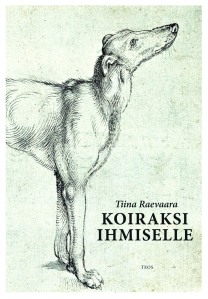
Tiina Raevaara, "Koiraksi ihmiselle"(2011, About dogs and humans) cover - "English greyhound" drawing by Albrecht Dürer (1500-1501)
The most important change is that unlike wolves, dogs gave up their fear of humans. Dogs are rather like wolf puppies that interact with humans without any fear. There is an interesting experiment in this respect: some Russian scientists tried to domesticate foxes by selecting those puppies that were not afraid of humans. After a few years, these foxes started to look dog-like with their ears going downwards and spots in their fur. They were whisking their tails like dogs and were obeying to human gestures (directional indications). Chimps, wolves can’t do that.
– With your book on dogs I discovered that by studying dog genes we could learn a lot about our own diseases.
– Dogs have similar health problems to humans: diabetes, heart diseases, etc. It is easier to study canine genes than studying human ones. A lot of research is therefore done on dogs trying to find cures for human diseases.
– Dogs have changed genetically over time. We have changed too… but has their peculiar relationship changed?
The relationship has not changed a lot… and it has not changed the human beings. There is a theory that the sense of smell has been left to dogs and that the facial structure of humans has developed into one where smelling is less important. Forced breeding has made them ill however.
Interview: Ruxandra Balboa-Pöysti – text review: Diana Kaley
_____________________________________
IN YOUR AGENDA’S
Other books by writers from the Teos stall for you to read this autumn:
http://www.teos.fi/fi/media/index.php?sub=2&id=396
Marko Lempinen “Matti Hagman.Stadin Kingi” (release in September 2011)
Annika Luther “Kodittomien kaupunki” (release in August) (translated from Swedish version “De hemlösas stad” Söderströms, 2011)
A.S.Byatt “Lasten kirja” (translated from English “The Children’s book”), release in August 2011
Raija Oranen “Nimeltään Kekkonen”, release in August 2011
Advised surrealistic visits around Magritte’s world:
http://www.tate.org.uk/liverpool/exhibitions/renemagritte/default.shtm
Magritte museum in Brussels:
http://www.musee-magritte-museum.be/
Dog stories from the other side of the Atlantic: “the dogs in the trees” by Matthew Battles
http://redlemona.de/matthew-battles/the-sovereignties-of-invention/the-dogs-in-the-trees-0
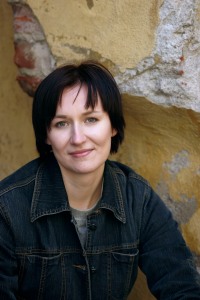

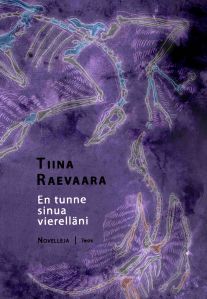
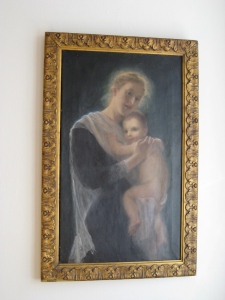
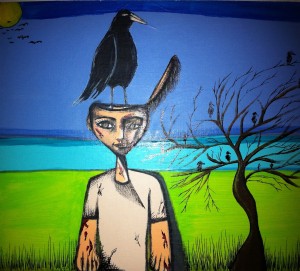
Comments
One Response to “TIINA RAEVAARA: where science and surrealism meet”Trackbacks
Check out what others are saying...[…] ‘My Creator, My Creation’ by Tiina Raevaara (Finland), is riveting. It is a story told from the perspective of a female robot, designed to […]